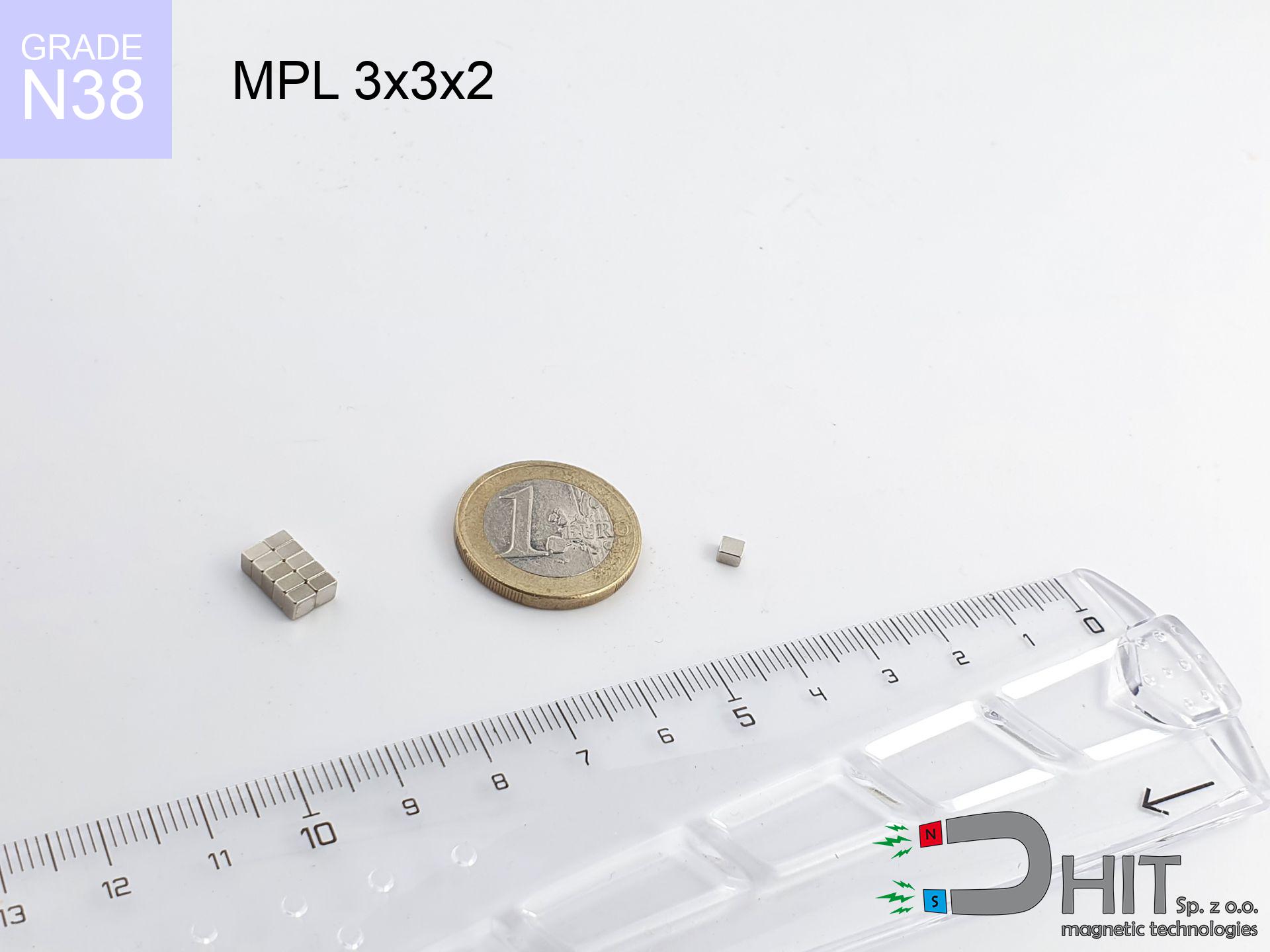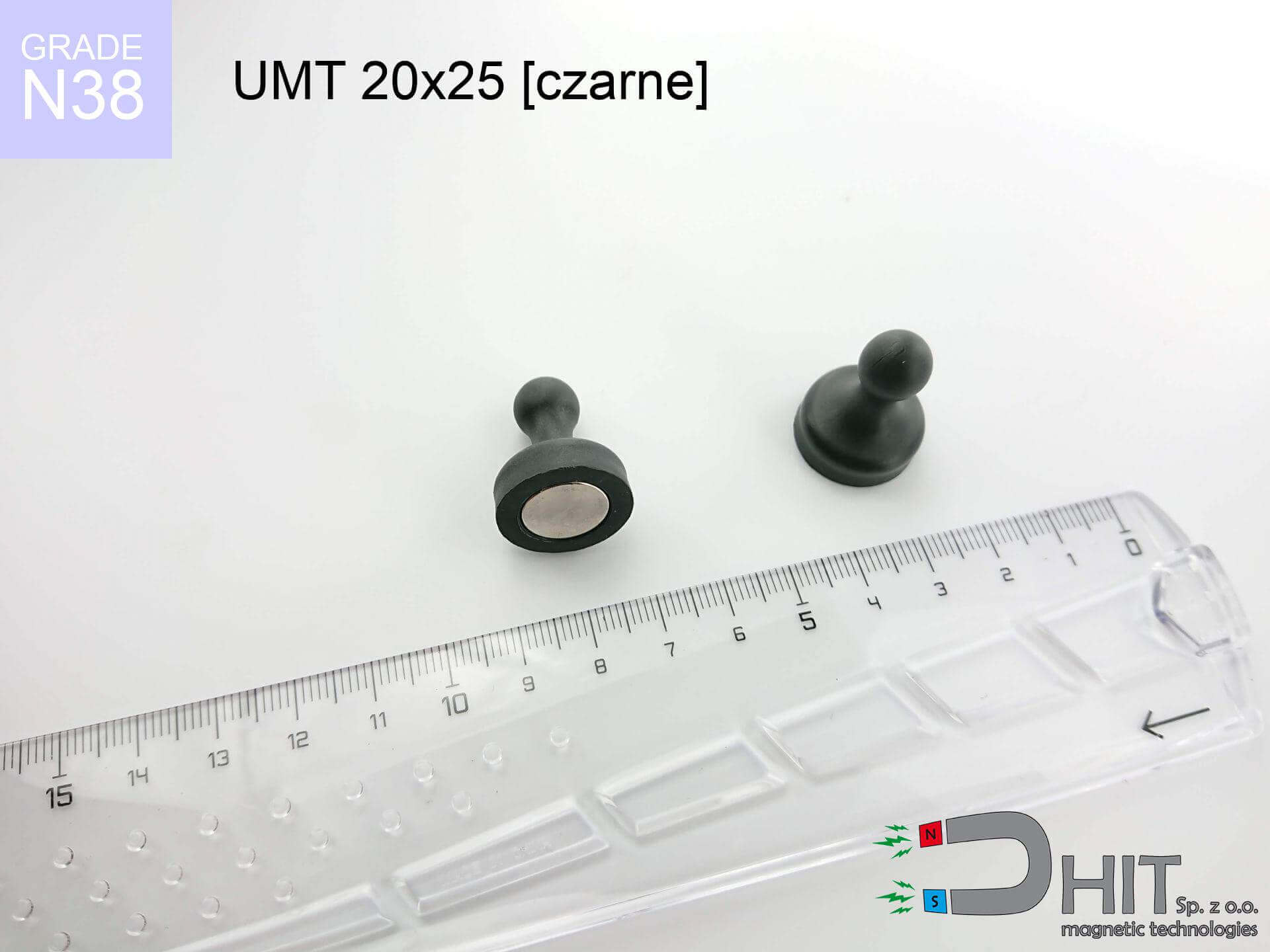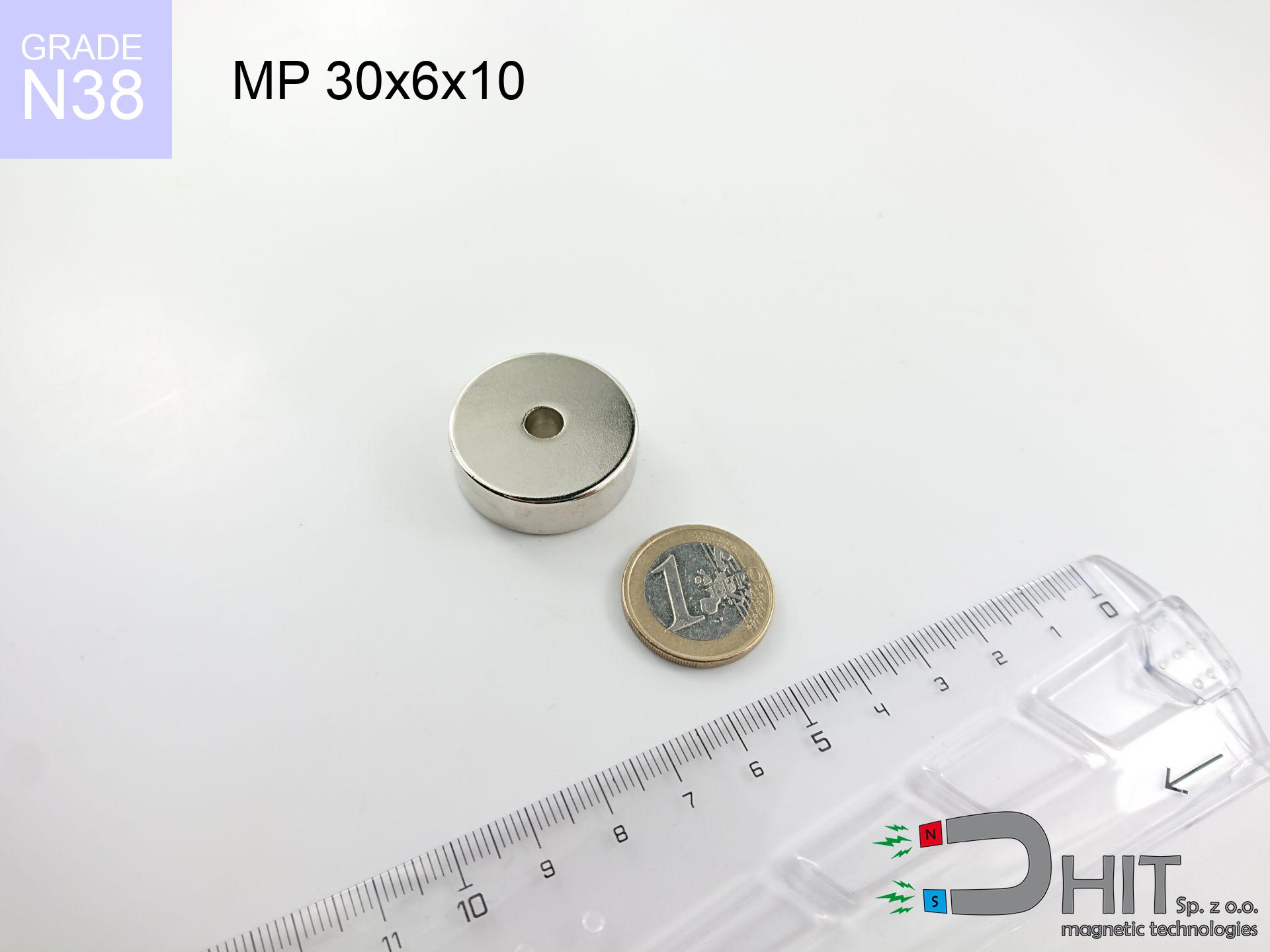UMGB 135x40 [M10+M12] GW F600 +Lina GOBLIN / N38 - goblin magnetic holder
goblin magnetic holder
Catalog no 350437
GTIN/EAN: 5906301814795
Diameter Ø
135 mm [±1 mm]
Height
40 mm [±1 mm]
Weight
4300 g
Magnetization Direction
↑ axial
Load capacity
680.00 kg / 6668.52 N
Coating
[NiCuNi] Nickel
Magnetic Flux
~ 1 000 Gauss [±5%]
735.24 ZŁ with VAT / pcs + price for transport
597.76 ZŁ net + 23% VAT / pcs
bulk discounts:
Need more?
Call us now
+48 22 499 98 98
otherwise drop us a message through
contact form
our website.
Weight and structure of a neodymium magnet can be checked with our
magnetic calculator.
Orders submitted before 14:00 will be dispatched today!
Detailed specification - UMGB 135x40 [M10+M12] GW F600 +Lina GOBLIN / N38 - goblin magnetic holder
Specification / characteristics - UMGB 135x40 [M10+M12] GW F600 +Lina GOBLIN / N38 - goblin magnetic holder
| properties | values |
|---|---|
| Cat. no. | 350437 |
| GTIN/EAN | 5906301814795 |
| Production/Distribution | Dhit sp. z o.o. |
| Country of origin | Poland / China / Germany |
| Customs code | 85059029 |
| Diameter Ø | 135 mm [±1 mm] |
| Height | 40 mm [±1 mm] |
| Weight | 4300 g |
| Magnetization Direction | ↑ axial |
| Load capacity ~ ? | 680.00 kg / 6668.52 N |
| Coating | [NiCuNi] Nickel |
| Holder Type | 2 sided |
| Material Type | Structural steel S235 (ferrous) |
| Magnetic Flux | ~ 1 000 Gauss [±5%] |
| Rope Length | 25 m |
| Rope Capacity | ~ 1595 kg |
| Rope Diameter | Ø 8 mm |
| Gloves | 1 pair |
| Size/Mount Quantity | 2xM10/1xM12 |
| Manufacturing Tolerance | ±1 mm |
Magnetic properties of material N38
| properties | values | units |
|---|---|---|
| remenance Br [min. - max.] ? | 12.2-12.6 | kGs |
| remenance Br [min. - max.] ? | 1220-1260 | mT |
| coercivity bHc ? | 10.8-11.5 | kOe |
| coercivity bHc ? | 860-915 | kA/m |
| actual internal force iHc | ≥ 12 | kOe |
| actual internal force iHc | ≥ 955 | kA/m |
| energy density [min. - max.] ? | 36-38 | BH max MGOe |
| energy density [min. - max.] ? | 287-303 | BH max KJ/m |
| max. temperature ? | ≤ 80 | °C |
Physical properties of sintered neodymium magnets Nd2Fe14B at 20°C
| properties | values | units |
|---|---|---|
| Vickers hardness | ≥550 | Hv |
| Density | ≥7.4 | g/cm3 |
| Curie Temperature TC | 312 - 380 | °C |
| Curie Temperature TF | 593 - 716 | °F |
| Specific resistance | 150 | μΩ⋅cm |
| Bending strength | 250 | MPa |
| Compressive strength | 1000~1100 | MPa |
| Thermal expansion parallel (∥) to orientation (M) | (3-4) x 10-6 | °C-1 |
| Thermal expansion perpendicular (⊥) to orientation (M) | -(1-3) x 10-6 | °C-1 |
| Young's modulus | 1.7 x 104 | kg/mm² |
Material specification
| iron (Fe) | 64% – 68% |
| neodymium (Nd) | 29% – 32% |
| boron (B) | 1.1% – 1.2% |
| dysprosium (Dy) | 0.5% – 2.0% |
| coating (Ni-Cu-Ni) | < 0.05% |
Environmental data
| recyclability (EoL) | 100% |
| recycled raw materials | ~10% (pre-cons) |
| carbon footprint | low / zredukowany |
| waste code (EWC) | 16 02 16 |
Other proposals
Pros as well as cons of neodymium magnets.
Benefits
- They virtually do not lose power, because even after ten years the decline in efficiency is only ~1% (according to literature),
- They maintain their magnetic properties even under external field action,
- By applying a shiny layer of silver, the element presents an professional look,
- The surface of neodymium magnets generates a powerful magnetic field – this is one of their assets,
- Made from properly selected components, these magnets show impressive resistance to high heat, enabling them to function (depending on their form) at temperatures up to 230°C and above...
- Thanks to the possibility of flexible molding and adaptation to unique requirements, neodymium magnets can be produced in a wide range of forms and dimensions, which expands the range of possible applications,
- Wide application in innovative solutions – they are commonly used in magnetic memories, electric drive systems, advanced medical instruments, and technologically advanced constructions.
- Relatively small size with high pulling force – neodymium magnets offer impressive pulling force in compact dimensions, which allows their use in compact constructions
Weaknesses
- To avoid cracks upon strong impacts, we recommend using special steel housings. Such a solution secures the magnet and simultaneously improves its durability.
- Neodymium magnets demagnetize when exposed to high temperatures. After reaching 80°C, many of them experience permanent weakening of power (a factor is the shape as well as dimensions of the magnet). We offer magnets specially adapted to work at temperatures up to 230°C marked [AH], which are very resistant to heat
- When exposed to humidity, magnets usually rust. For applications outside, it is recommended to use protective magnets, such as magnets in rubber or plastics, which secure oxidation and corrosion.
- We recommend cover - magnetic mechanism, due to difficulties in producing threads inside the magnet and complex shapes.
- Health risk to health – tiny shards of magnets are risky, if swallowed, which is particularly important in the context of child health protection. Furthermore, tiny parts of these products can be problematic in diagnostics medical in case of swallowing.
- High unit price – neodymium magnets are more expensive than other types of magnets (e.g. ferrite), which hinders application in large quantities
Holding force characteristics
Maximum lifting force for a neodymium magnet – what contributes to it?
- using a sheet made of low-carbon steel, acting as a ideal flux conductor
- whose transverse dimension is min. 10 mm
- characterized by even structure
- without the slightest clearance between the magnet and steel
- during detachment in a direction vertical to the mounting surface
- at temperature room level
Key elements affecting lifting force
- Gap (between the magnet and the metal), since even a very small distance (e.g. 0.5 mm) results in a reduction in force by up to 50% (this also applies to paint, corrosion or dirt).
- Pull-off angle – note that the magnet holds strongest perpendicularly. Under shear forces, the capacity drops drastically, often to levels of 20-30% of the maximum value.
- Element thickness – for full efficiency, the steel must be sufficiently thick. Paper-thin metal limits the attraction force (the magnet "punches through" it).
- Plate material – mild steel gives the best results. Higher carbon content decrease magnetic permeability and holding force.
- Surface finish – full contact is possible only on smooth steel. Any scratches and bumps create air cushions, weakening the magnet.
- Thermal environment – temperature increase results in weakening of induction. Check the thermal limit for a given model.
Holding force was measured on a smooth steel plate of 20 mm thickness, when a perpendicular force was applied, however under parallel forces the lifting capacity is smaller. In addition, even a slight gap between the magnet and the plate reduces the lifting capacity.
Warnings
Precision electronics
A strong magnetic field negatively affects the operation of magnetometers in phones and navigation systems. Maintain magnets close to a device to prevent breaking the sensors.
Power loss in heat
Avoid heat. Neodymium magnets are susceptible to heat. If you require resistance above 80°C, ask us about HT versions (H, SH, UH).
ICD Warning
Health Alert: Neodymium magnets can deactivate heart devices and defibrillators. Do not approach if you have electronic implants.
Allergy Warning
Studies show that the nickel plating (standard magnet coating) is a potent allergen. For allergy sufferers, prevent touching magnets with bare hands or opt for encased magnets.
Crushing force
Danger of trauma: The pulling power is so immense that it can cause blood blisters, pinching, and even bone fractures. Use thick gloves.
Safe operation
Exercise caution. Rare earth magnets attract from a distance and connect with huge force, often quicker than you can move away.
Safe distance
Data protection: Strong magnets can damage data carriers and sensitive devices (heart implants, medical aids, mechanical watches).
Magnets are brittle
Despite the nickel coating, the material is delicate and not impact-resistant. Do not hit, as the magnet may crumble into hazardous fragments.
Flammability
Mechanical processing of NdFeB material poses a fire hazard. Neodymium dust oxidizes rapidly with oxygen and is difficult to extinguish.
Product not for children
Absolutely store magnets out of reach of children. Choking hazard is significant, and the effects of magnets clamping inside the body are fatal.

![Goblin holder UMGB 135x40 [M10+M12] GW F600 +Lina GOBLIN / N38 Goblin holder UMGB 135x40 [M10+M12] GW F600 +Lina GOBLIN / N38](https://cdn3.dhit.pl/graphics/banners/magnet.webp)
![UMGB 135x40 [M10+M12] GW F600 +Lina GOBLIN / N38 - goblin magnetic holder](https://cdn3.dhit.pl/graphics/products/umgb-135x40-m10+m12-gw-f600-+lina-goblin-zuz.jpg)

![SM 25x400 [2xM8] / N42 - magnetic separator SM 25x400 [2xM8] / N42 - magnetic separator](https://cdn3.dhit.pl/graphics/products/sm-25x400-2xm8-daj.jpg)



